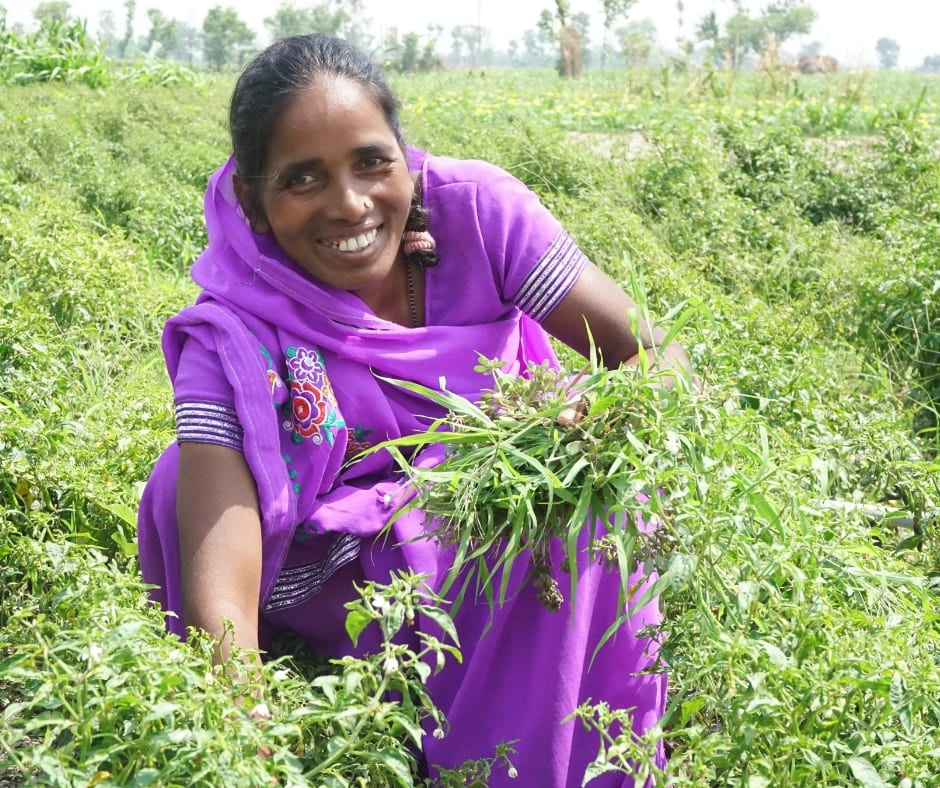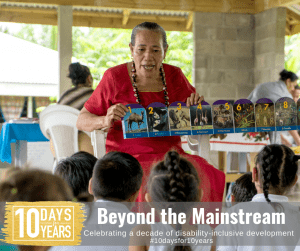Beyond the mainstream – A targeted approach to disability inclusion
In international development, the concept of ‘mainstreaming’—particularly of gender considerations—has taken hold. Referring to the ‘process of assessing the implications for women and men of any planned action’[1], gender mainstreaming has since been adapted to foster the inclusion of other groups, including people with disabilities. But for transformative disability inclusion to take place, mainstreaming is only half the story.
The Australian Government’s original Development for All strategy, introduced in 2009, reflected that other donors had identified the need for a balanced approach that implemented both mainstreamed and disability-specific interventions with the recognition that ‘neither is superior to the other’[2]. By 2015, this understanding had become embedded in the Australian aid program and a ‘twin-track’ approach was affirmed as foundational to the implementation of the subsequent Development for All 2015-2020: Strategy for strengthening disability inclusion in Australia’s aid program.
The twin track approach recognises that there are many different barriers that hinder the access and participation of people with disabilities in economic, social and political activities. It affirms that if these barriers are to be comprehensively addressed, programs that specifically target people with disabilities are needed to support their involvement in wider, mainstream initiatives. This can include providing access to interpreters to ensure that Deaf children can benefit from strengthened education programs, or facilitating access to assistive devices like prosthetics, crutches or wheelchairs to underpin improved access to employment or community life.
In line with the twin-track approach, Australian aid has supported targeted programs from rural India to Samoa to ensure that the specific barriers and exclusions faced by people with disabilities are addressed.
Addressing economic barriers for women in rural India
Living in Uttar Pradesh, India, Maya is a single mother of four children and the family’s breadwinner. Poliomyelitis infection at the age of five affected her with neuromuscular paralysis. As a part of the Parivartan Community Based Rehabilitation Project, managed by CBM Australia with funding from the Australian NGO Cooperation Program, Maya participated in a disability-inclusive organic farming project. Through the project she was also able to access a customised wheelchair. Maya now manages a small farm, where she grows vegetables which draw an income.
The Parivartan project has focused specifically on ensuring that people with disabilities have access to assistive devices, rehabilitation support, health care, education, and specific support to develop small businesses. As a result, 490 people who were previously unaware of their entitlements have received assistive devices from government; 890 people are now accessing disability support pensions; and 93 self-help groups have been established, with 69 of these accessing government loans.
For over 2600 people and their families who benefit from the project, the results have been life changing. ‘Before joining in the project work, I was very demotivated,’ said one woman who is now a leader in a Disabled People’s Organisation. ‘Now I feel good and there is a sea change in my life. I have met many experts on different subjects, and they have motivated me. Today – I am feeling awesome!’

Caption: Living in Uttar Pradesh, India, Maya, 36, is a single mother of four children and the family’s breadwinner. Maya is part of a CBM Australia ANCP supported disability inclusive organic farming project, where she accessed a customised wheelchair. Maya now manages a small farm, where she grows vegetables and to draw an income. Image copyright: CBM Australia
Accessing assistive device in Samoa
The Samoa Mobility Device Service is creating consistent, equitable and sustainable access to appropriate assistive devices for people with a mobility disability in Samoa. The program is a collaboration between the Samoa National Health Service, NOLA (Nuanua O Le Alofa) and Motivation Australia with funding from the Samoa Disability Programme as part of the Australian aid program.
Access to an individually-designed mobility device can enable participation in a range of economic and social activities. As Malelega Tuato shared after her leg was amputated as the result of diabetic complications, ‘I had been teaching for 35 years in the government school. When I got sick with diabetes, I resigned. It was too hard for me to stand up, to walk. I could not do anything, just lay on bed.’
Since receiving a prosthetic leg through the Samoan National Health Service’s Mobility Device Service, Malelega was able to return to teaching. ‘I love teaching because it is my calling. When I had my artificial limb I can do everything because I can walk.’
While Maya and Malelega live in vastly different countries and contexts, their stories have a common thread: they are both participants of targeted programs to overcome barriers they experience in their community. As part of a balanced twin-track approach, specific disability support programs can play a crucial role ensuring the involvement of people with disabilities in mainstream development initiatives. Far from being replaced by a focus on mainstreaming, targeted aid efforts are as relevant as ever as they work to address barriers and exclusion experienced by people with disabilities and ensure they are participants of wider development success.
Information, video and photos used in partnership with Motivation Australia and CBM Australia.
References
[1] United Nations, 1997. Report of the Economic and Social Council for 1997. Available from here.
[2] Australian Agency for International Development, 2008. Development for All: Towards a disability-inclusive Australian aid program 2009-2014. AusAID, Canberra. p. 35.
Sign up to receive the daily campaign article:
By signing up you will receive a daily email from the 10 days for 10 years campaign between 29 April to 10 May 2019.
10 days for 10 years
In partnership with CBM Australia and other ADDC partner organisations, the 10 days for 10 years campaign runs from 29 April to 10 May 2019. The campaign is celebrating the achievements in disability-inclusive development (DID) within the Australian aid sector, particularly those led or made possible by Australian aid under the first and second Development for All strategies. Articles will be released daily here on the ADDC website.
Follow the campaign via the hashtag #10daysfor10years and follow @ADDCnews on Twitter, Facebook and LinkedIn.
- 10 days for 10 years
- Day 1 – A Legacy of Leadership
- Day 2 – Beyond the Mainstream
- Day 3 – Inclusion at the Intersection
- Day 4 – Disabled People’s Organisations Leading Change
- Day 5 – Recognising Diversity within Disability
- Day 6 – Reporting from the Shadows
- Day 7 – Volunteering for Inclusion
- Day 8 – Evolution of Inclusion
- Day 9 – Education for All
- Day 10 – Building on Success


